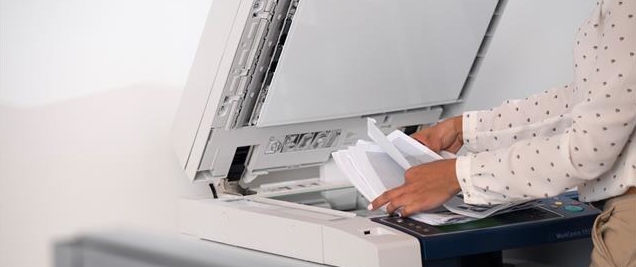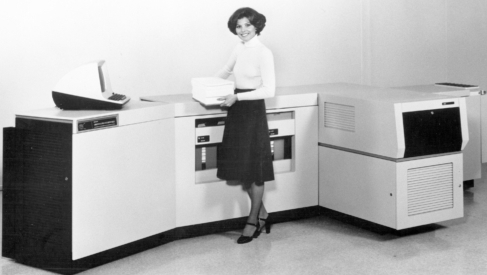Like most businesses, you probably know instinctively that print is costing you more than it should. You’ve probably guessed there’s waste somewhere in the system, but struggle to identify it.
If so, you’re not alone: on average,15% of a typical SMB’s overall IT budget goes towards printing, and 12% of IT resources support print issues1. So how do you reduce those figures?
Here are the top 10 ways that your printing is costing you more than it should – and simple solutions to help stamp out that waste.
1. Decentralized printing supplies
Nobody wants to run out of toner in the middle of an important print job, so it’s important to have stock on hand. The trouble is, in many organizations, ordering is done on an ad-hoc basis, with no overall control or oversight.
Which means that costs spiral out of control, and if you have a variety of printer vendors, you end up with incompatible toner cartridges scattered across the company.
Solution: Centralize and standardize your supplies.
2. Cheap printers
This is an even more costly version of the printing‑supplies problem. It starts when a department or an individual decides that they need an extra printer, and opt for an inexpensive one.
Except cheap can sometimes work out to be very costly in the long run. People are ordering expensive supplies separately, unnecessarily tying up support resources, and may end up under-utilizing the printer.
Replicate that scenario across the company, and you’ve got a big problem.
Solution: Centralize and standardize your printers, for lower costs, greater oversight and increased productivity.
3. Printing in color when you don’t need to
Studies have shown that 69% of readers understand new ideas better when they’re printed in color. It makes a big impact when it’s needed most – for sales proposals, for example.
But not everybody needs to print everything in color. And yet that’s often the case in uncontrolled, unmonitored environments.
Solution: Put policies and permissions in place to ensure that only those who need to print in color can do so.
4. Printers in the wrong place
Because print environments often develop in an unstructured way to meet immediate needs, printers can end up in a less than optimal position.
Which means your users have to walk further than they should to pick up their print jobs, and may have to wait in line at a printer that’s constantly busy. Even worse, you might end up with more of those ‘cheap’ printers than you really need. So you get unhappy users, lower productivity levels and unnecessary costs you can’t even see, let alone control.
Solution: Carry out a print assessment (or have a partner do it for you) to see what printers you have and how they’re being used. Reposition and rationalize as necessary.
5. High volume of IT support calls
It’s estimated that between 40 and 60% of all support calls are print-related 2. Multiply that by the average call cost3 of $14, and you’re looking a lot of ‘hidden’ waste – in plain sight.
Ad-hoc printers and supplies are a big contributory factor: those cheap printers just get more and more expensive as users run into difficulties and support staff struggle to find answers.
Unnecessarily complicated processes (such as printing from mobile devices without easier-to-use print apps) can also push up support call volumes.
Solution: Standardize and update your print fleet, and simplify your processes.
6. Uncollected print jobs
In a world of digital distractions, it’s easy to hit the ‘print’ button and forget to pick up your document. In fact, it’s estimated that 25% of print jobs are never collected4.
Which means wasted toner, wasted paper, and wasted effort as somebody has to clear and dispose of the unwanted document. Not to mention the security implications of having commercially sensitive material lying around.
Solution: Introduce secure document release via PIN or swipe card.
7. Reduced employee productivity
This is one of the big hidden costs of a print environment that hasn’t been optimized. When you factor in the soft costs of frustrated users whose productivity level is dropping by the minute, it all begins to add up.
It’s estimated that 3,250 man‑hours a year are wasted waiting for print jobs in companies with over 250 people5. And employees lose 488 hours of productivity waiting for printer service or supplies6.
Solution: Simplify and optimize your print environment and processes.
8. MFPs that are ‘just printers’
Today’s multifunction printers (MFPs) are much more than printers. They have the ability to handle sophisticated document workflows and simplify complicated tasks to make users’ lives easier.
For example, an invoice processing workflow could be set up that scans a document, saves it to Dropbox, and sends an email to somebody in the finance department.
This is not just a cost – it’s an opportunity cost too. If you’re not harnessing the power of technology, you’re missing out on big gains.
Solution: Use today’s advanced MFP technology to automate workflows so you can operate more efficiently and productively.
9. No mobile/cloud solution
In the age of BYOD, employees expect to be able to print quickly and easily from Dropbox, MS Office 365 or Google Apps for Work from any device to the nearest printer.
If that’s not the case, they may have to find a workaround e.g. downloading third‑party apps that push up your support call volumes and potentially compromise your network security.
Solution: Tie your print fleet to your mobile/cloud solution to let people print anywhere, at any time, from any device.
10. Doing it on your own
Managing your own print environment can take much more time, effort and resource than you realize. It can prove to be a false economy, with big hidden costs down the line.
Outsourcing your print management to a partner could be the best move you make, cutting your costs by up to 30%.
You get a single point of contact who manages vendors, handles supplies, has a detailed understanding of your print environment, provides comprehensive support and draws on industry-standard best practices.
Solution: Look for a Managed Print Services (MPS) partner who can help you assess your current environment and plan for the environment you need.
1. Quocirca SMB MPS Study, 2014
2. Xerox RealBusiness Magazine – Gartner ITxpo Issue, 2012
3. 2014 HDI Support Center Practices & Salary Report
4. Nuance Xerox, Minutes equal hours: How to stop wasting time at the printer
5. Xerox Corporation, EPS Pre-Contract Assessment Team Key Metrics Report, 2011
6. Based on Nuance Customer data / Internal Study of Help Desk Calls
Share this article on Twitter!
Tweet: Top 10 Ways Your Printing is Costing You More Than It Should http://ctt.ec/bIlR8+ via @XeroxOffice
Subscribe to the Small Business Solutions Blog and receive updates when we publish a new article. [wysija_form id=”1″]




[…] SMB’s overall IT budget goes towards printing, and 12% of IT resources support print issues1. So how do you reduce those […]